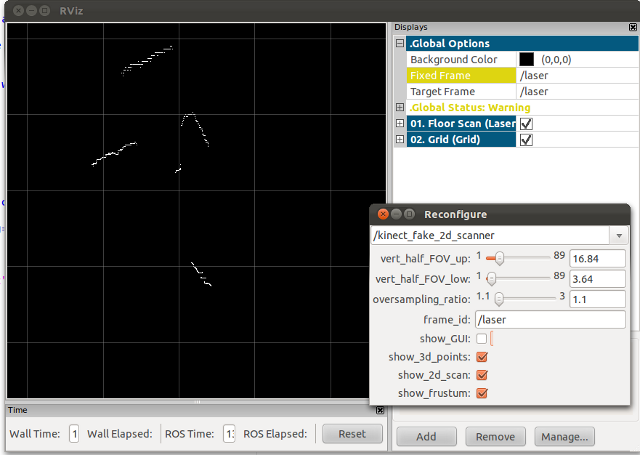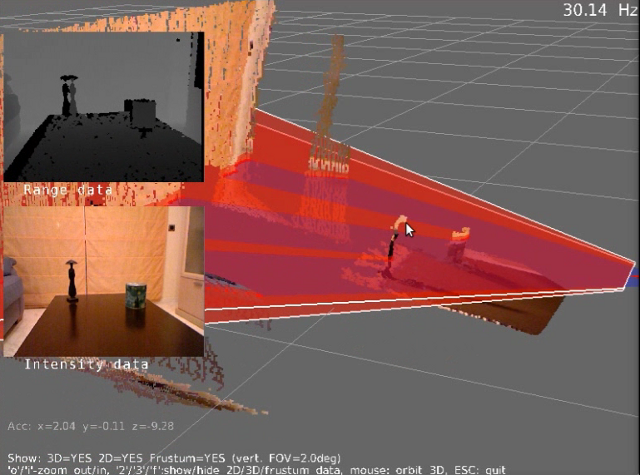Only released in EOL distros:
Package Summary
A ROS node to read range data from a Kinect sensor and convert it (in a flexible way) into 2D equivalent range scans. This allows low-cost implementation of classic SLAM and localization techniques originally designed to work with more expensive laser range finders.
- Author: Jose Luis Blanco
- License: GPL
- Source: git https://github.com/mrpt-ros-pkg/mrpt_hwdrivers.git (branch: master)
Package Summary
Kinect grabber as 2D laser scans
- Maintainer: Jose-Luis Blanco-Claraco <jlblanco AT ual DOT es>
- Author:
- License: BSD
- Source: git https://github.com/mrpt-ros-pkg/mrpt_navigation.git (branch: indigo-devel)
Package Summary
Kinect grabber as 2D laser scans
- Maintainer status: maintained
- Maintainer: Jose-Luis Blanco-Claraco <jlblanco AT ual DOT es>
- Author:
- License: BSD
- Source: git https://github.com/mrpt-ros-pkg/kinect_2d_scanner.git (branch: master)
Contents
Description
The node kinect_2d_scanner makes easy to connect to a Kinect sensor and publish equivalent 2D "fake laser" scans.
|
Internally, the node uses mrpt-hwdrivers which in turn uses libfreenect to directly open the sensor. Since only 2D scan data is published here, you should employ this node only if you won't need the 3D points.
All obstacles within a frustum are considered and the minimum distance is kept in each direction. The horizontal FOV of the frustum is automatically computed from the intrinsic parameters of the range camera, but the vertical FOV must be provided by the user, and can be set to be asymetric which may be useful depending on the zone of interest where to look for obstacles. See this video for an illustration of the frustum geometry and 3D obstacle points.
|
All spatial transformations are riguorously taken into account in this class, using the depth camera intrinsic calibration parameters. Calibration data should be provided in the format expected by MRPT (explain me!), but default values will be used otherwise.
Usage
Test with:
roscd kinect_2d_scanner roslaunch kinect_2d_scanner_test.launch
Read kinect_2d_scanner_test.launch for more details.
This node implements the dynamic_reconfigure interface.


